This post may contains affiliate links. Read our full disclosure here.
Natural rock elements in interior design have taken center stage in 2025 as homeowners increasingly seek out materials that bring a sense of permanence and earthiness to their spaces. The tactile richness of stone, pebbles, and natural rock creates a perfect counterpoint to our digital lives, establishing a grounding force in modern interiors. Whether incorporated as flooring, accent walls, or decorative pieces, these raw geological textures offer a timeless quality that simply can’t be replicated by synthetic materials.
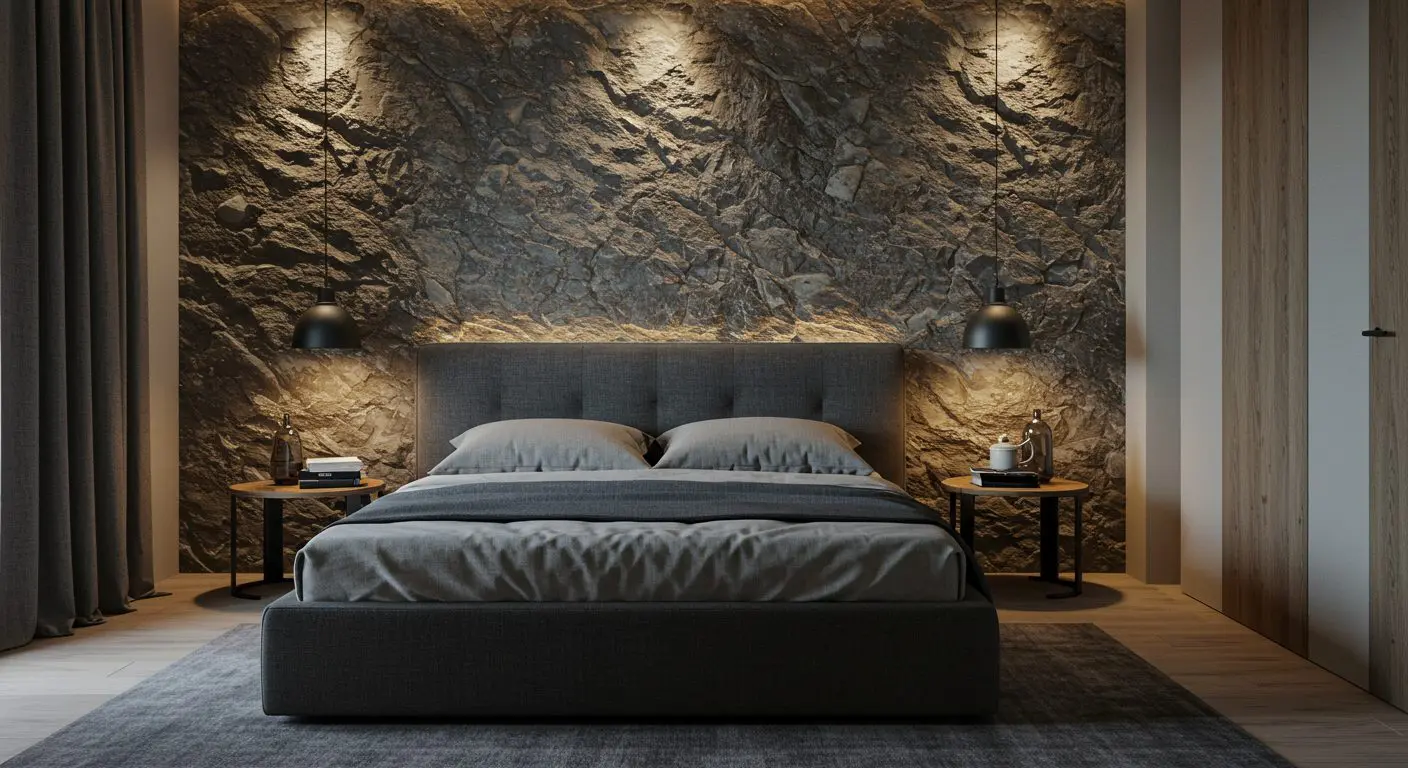
What makes these elements particularly appealing is their versatility across design styles. From sleek contemporary spaces to rustic farmhouse interiors, natural rock elements in interior design bridge the gap between polished sophistication and organic warmth. The subtle variations in color, texture, and pattern found in stone make each application unique – no two marble slabs or river rocks are identical, giving your space character that feels authentically yours.
Why Natural Rock Elements in Interior Design Are So Popular in 2025

The growing popularity of natural rock elements in interior design coincides with our collective desire to reconnect with nature. After years of sleek, tech-dominated spaces, many of us are craving authentic, tangible materials that feel real beneath our fingertips. When I recently renovated my bathroom, swapping out the standard ceramic tile for natural slate completely transformed the space from ordinary to extraordinary.
These earth-centric materials offer several distinct advantages:
- Earth tones help reduce visual clutter and noise
- Stone brings organic dimension to sleek, clean interiors
- Textured surfaces foster a sense of calm and grounding
- Natural variations create visual interest without busyness
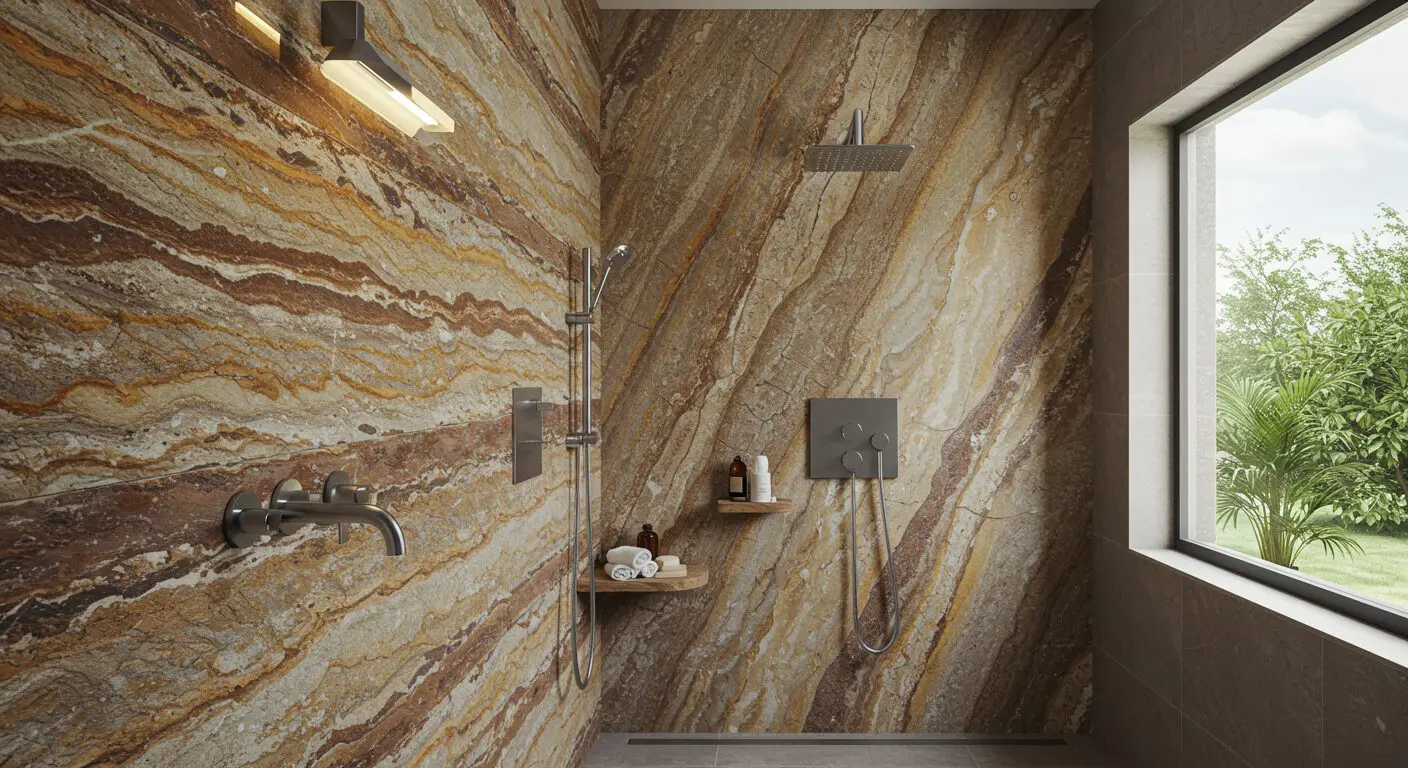
Bringing the outdoors in isn’t just a passing trend—it’s a fundamental shift in how we approach sensory interior design. Stone offers weight and authenticity that manufactured materials simply can’t match. My friend who works as an interior designer tells me that clients consistently report feeling more at ease in spaces that incorporate natural elements, especially stone and rock features.
“Stone is where nature meets permanence. It doesn’t just decorate a home—it roots it.”
Pebble Flooring for a Spa-Like Touch
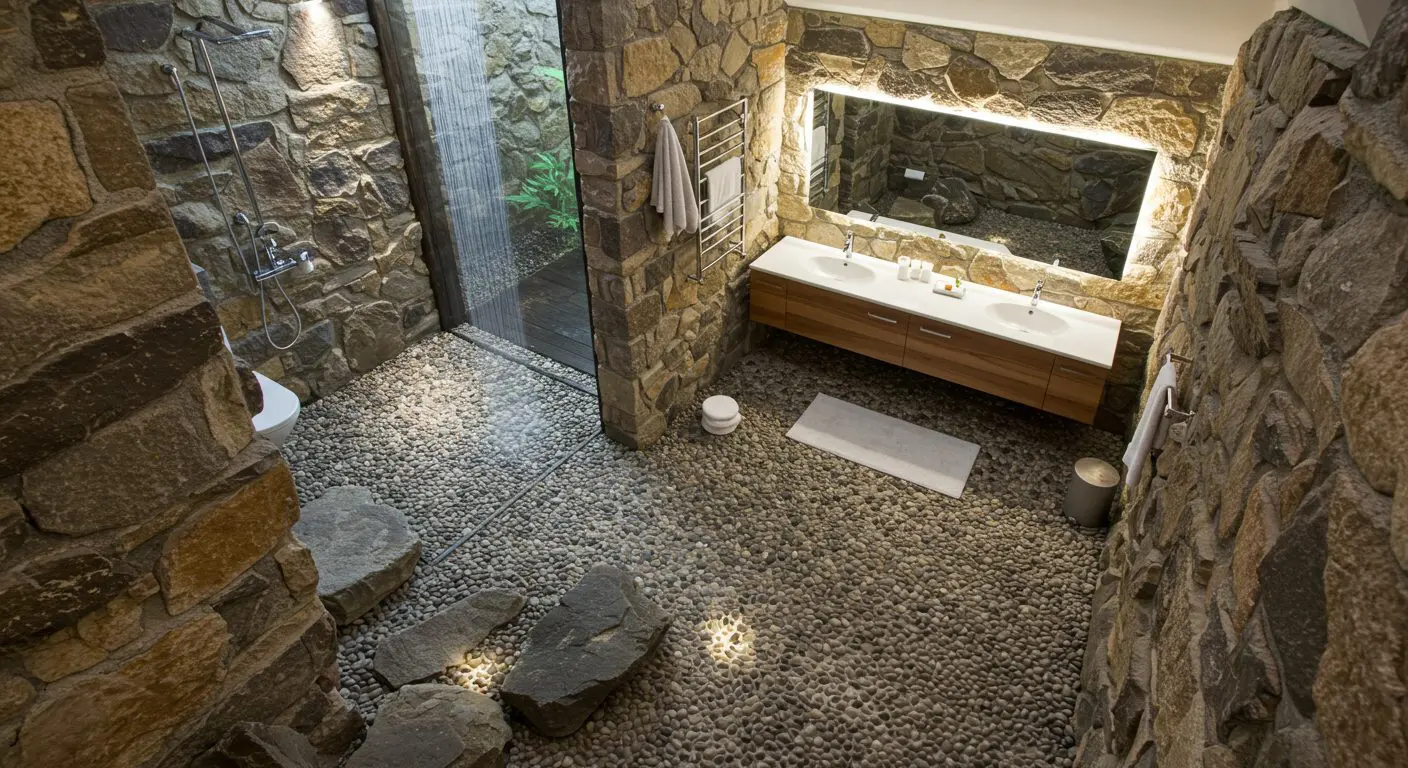
Pebble flooring stands out as one of the most transformative natural rock elements in interior design. The first time I stepped onto a pebble shower floor at a luxury hotel, I was completely sold on the sensory experience it created. Now that I’ve installed it in my own bathroom, I can attest to how it feels both therapeutic and invigorating underfoot – like a gentle foot massage with each step.
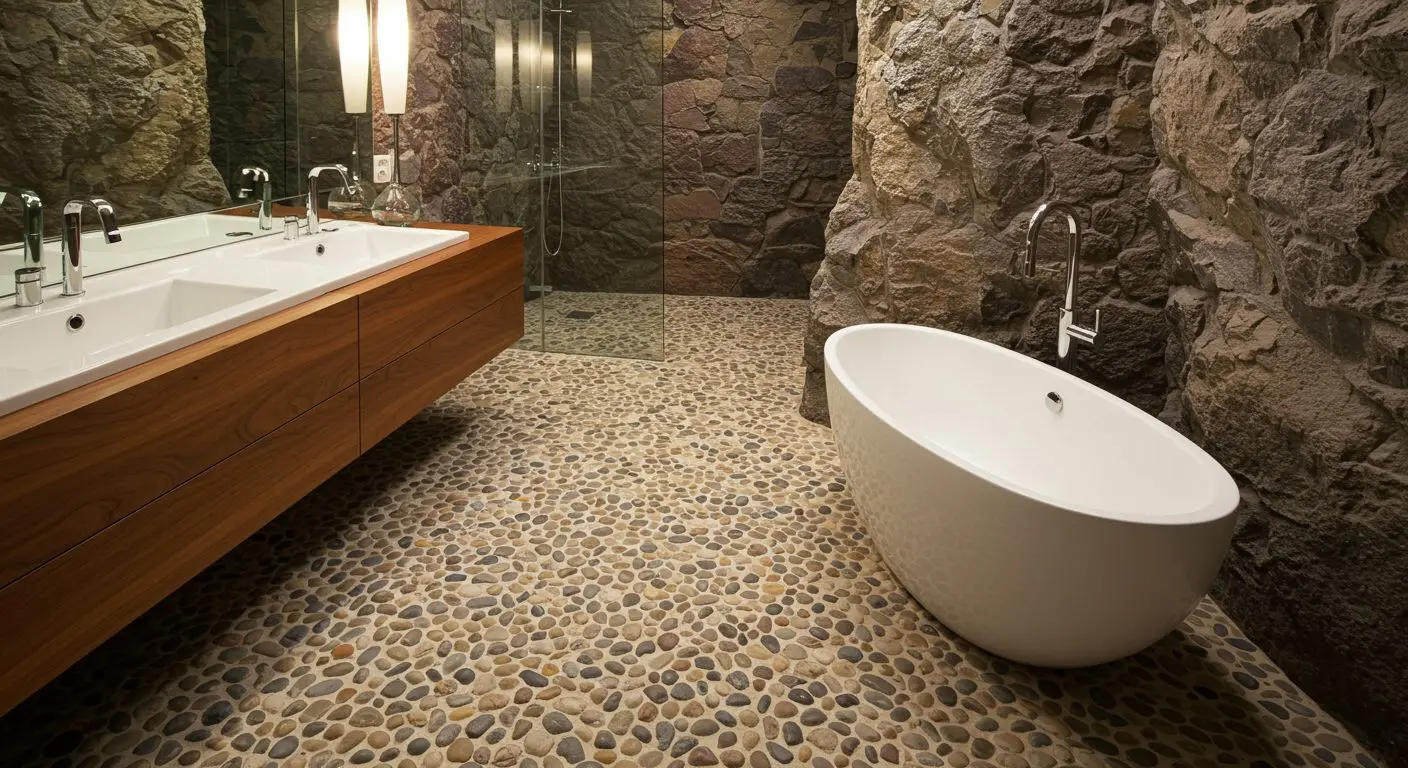
These rounded river stones are particularly well-suited for:
- Walk-in showers and wet rooms
- Bathroom floors and backsplash accents
- Mudroom entries and transitional spaces
- Meditation rooms and spa areas
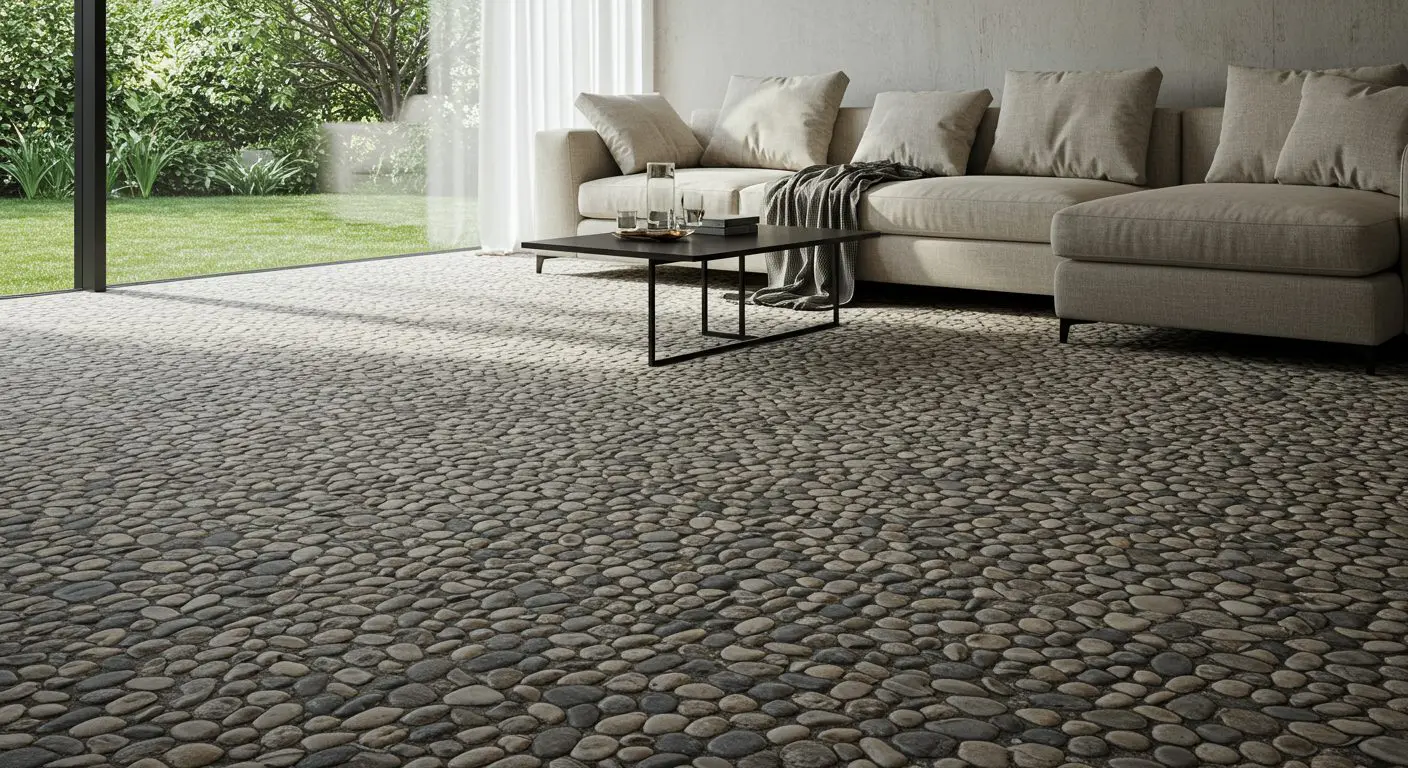
The natural slip resistance makes pebble flooring not just beautiful but practical in moisture-prone areas. Most installations use stones that are partially embedded in mortar and sealed with clear coats that preserve the natural look while making cleaning straightforward. The varied texture impacts the feel of the room dramatically, becoming a focal point without overwhelming other design elements.
Statement Stone Walls That Ground the Room
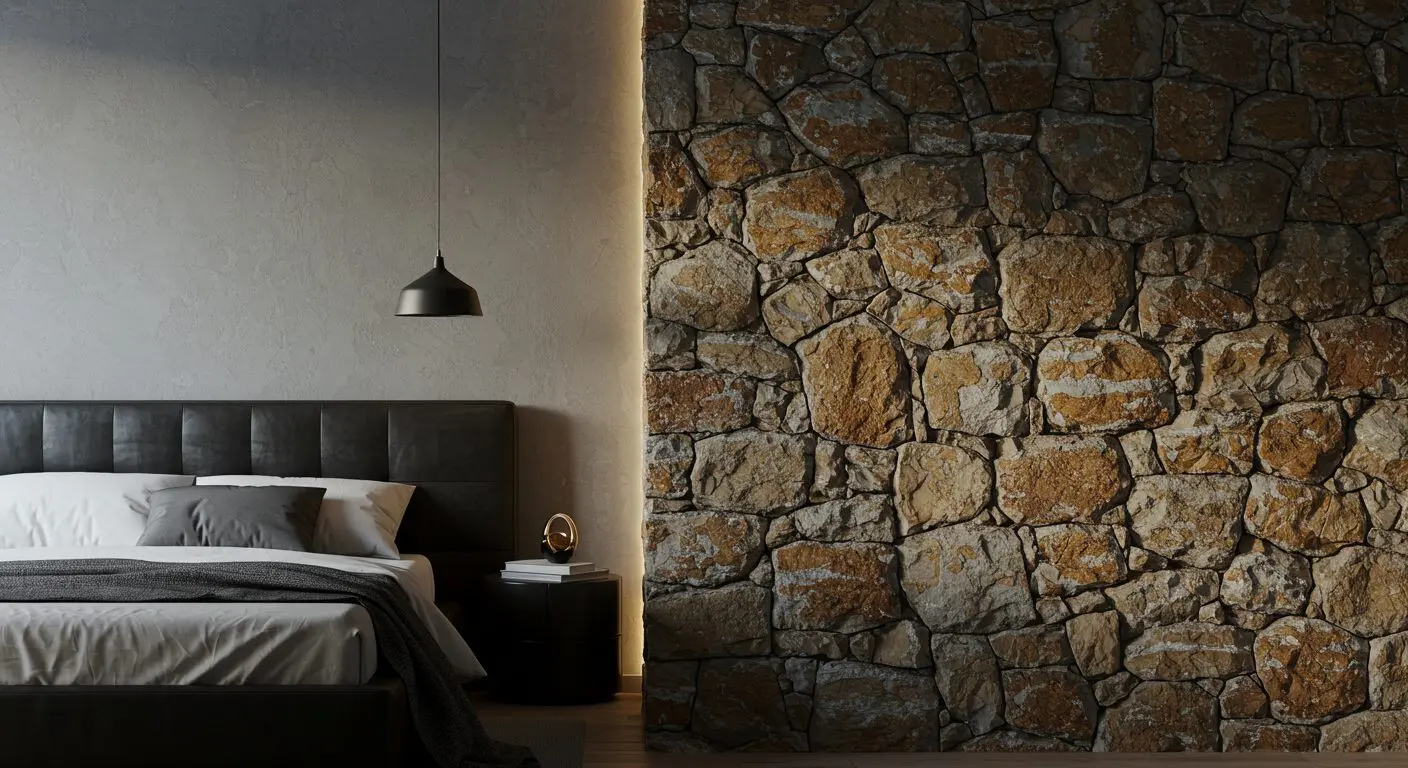
Nothing makes a more dramatic statement than a wall of natural stone. These vertical showcases of natural rock elements in interior design instantly become the focal point of any space they grace. When my sister renovated her living room, she installed a stacked quartzite feature wall behind her fireplace – visitors invariably comment on it before anything else in the house.
Popular applications for stone walls include:
- Feature walls behind beds or sofas
- Fireplace surrounds and chimney faces
- Entry foyers and transitional spaces
- Stairwell accents and half-walls
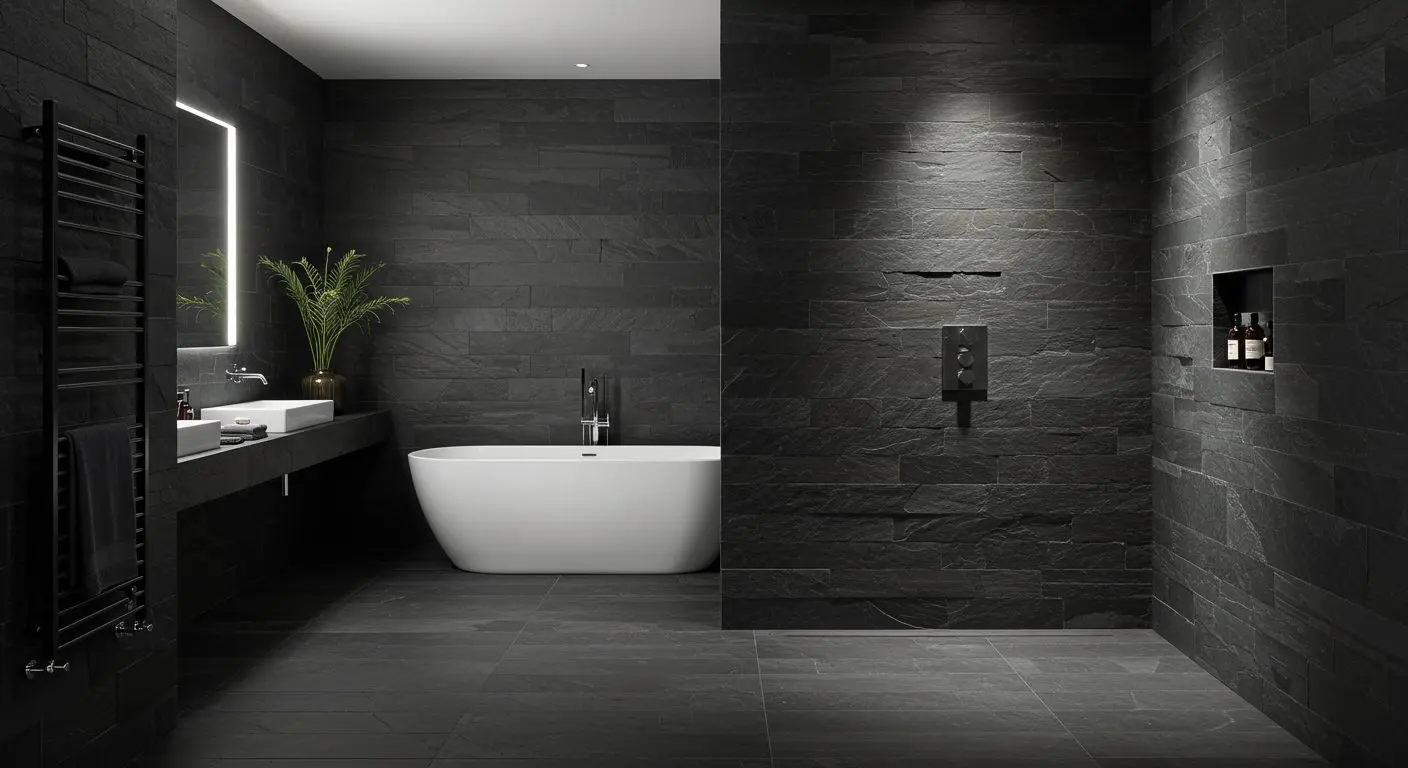
The variety of stone options allows designers to achieve vastly different looks. Slate creates a sleek, contemporary feel with its clean lines, while irregular fieldstone evokes a more rustic, organic character. Limestone offers a more uniform, neutral backdrop that can complement minimalist home decor surprisingly well.
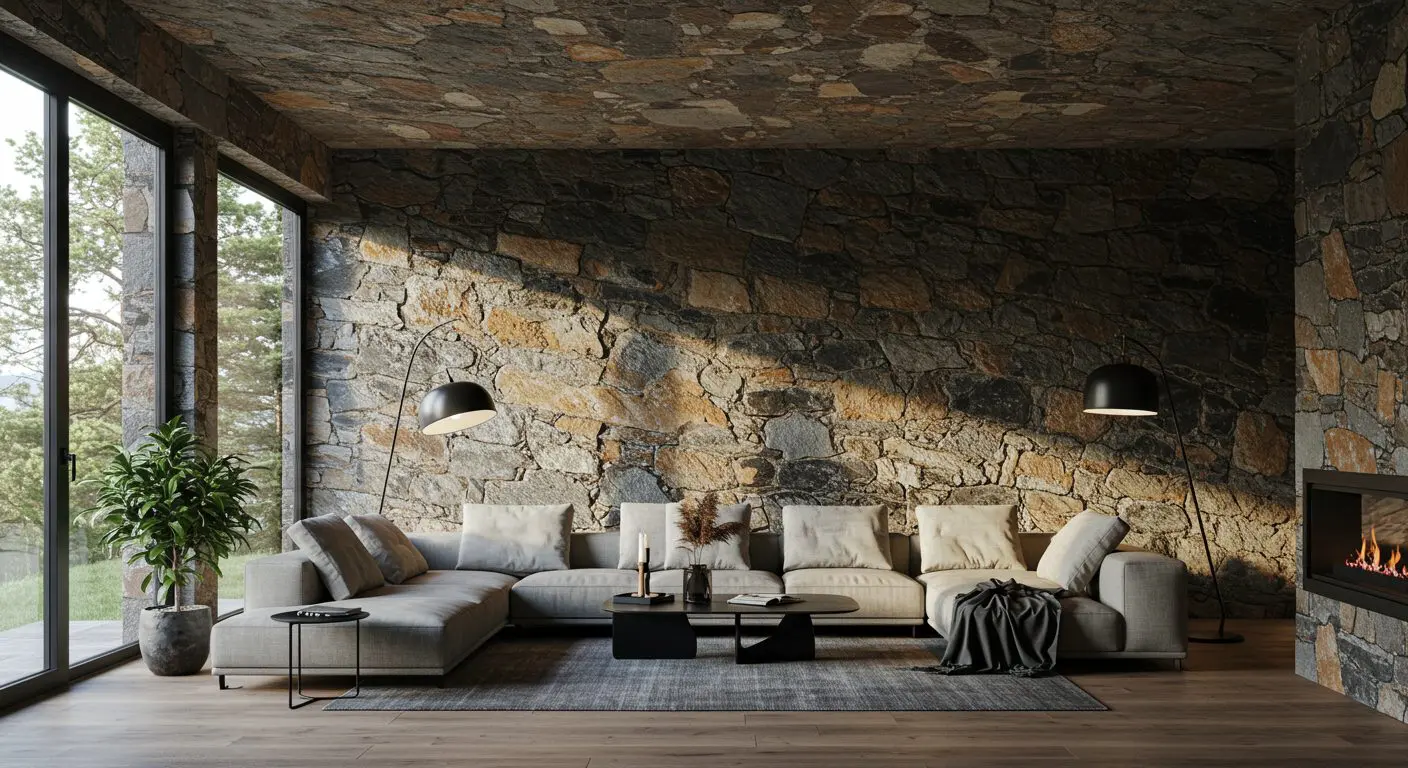
What many homeowners don’t realize is that these walls don’t need to feel heavy or overwhelming. With proper lighting and complementary materials, even a substantial stone wall can feel light and airy. The key is balancing it with softer elements throughout the space.
Decorative River Rock Accents

If you’re looking for subtle ways to incorporate natural rock elements in interior design, decorative river rocks offer the perfect solution. These smooth, water-polished stones bring gentle organic curves into spaces that might otherwise feel too angular or rigid. I use river rocks in shallow decorative trays throughout my home – they add a tactile element that guests can’t resist touching.
Creative ways to use river rock accents include:
- Around bathtub bases or shower transitions
- As borders along walkways or hallways
- Beneath floating vanities or furniture
- In clear glass vessels as tabletop accents
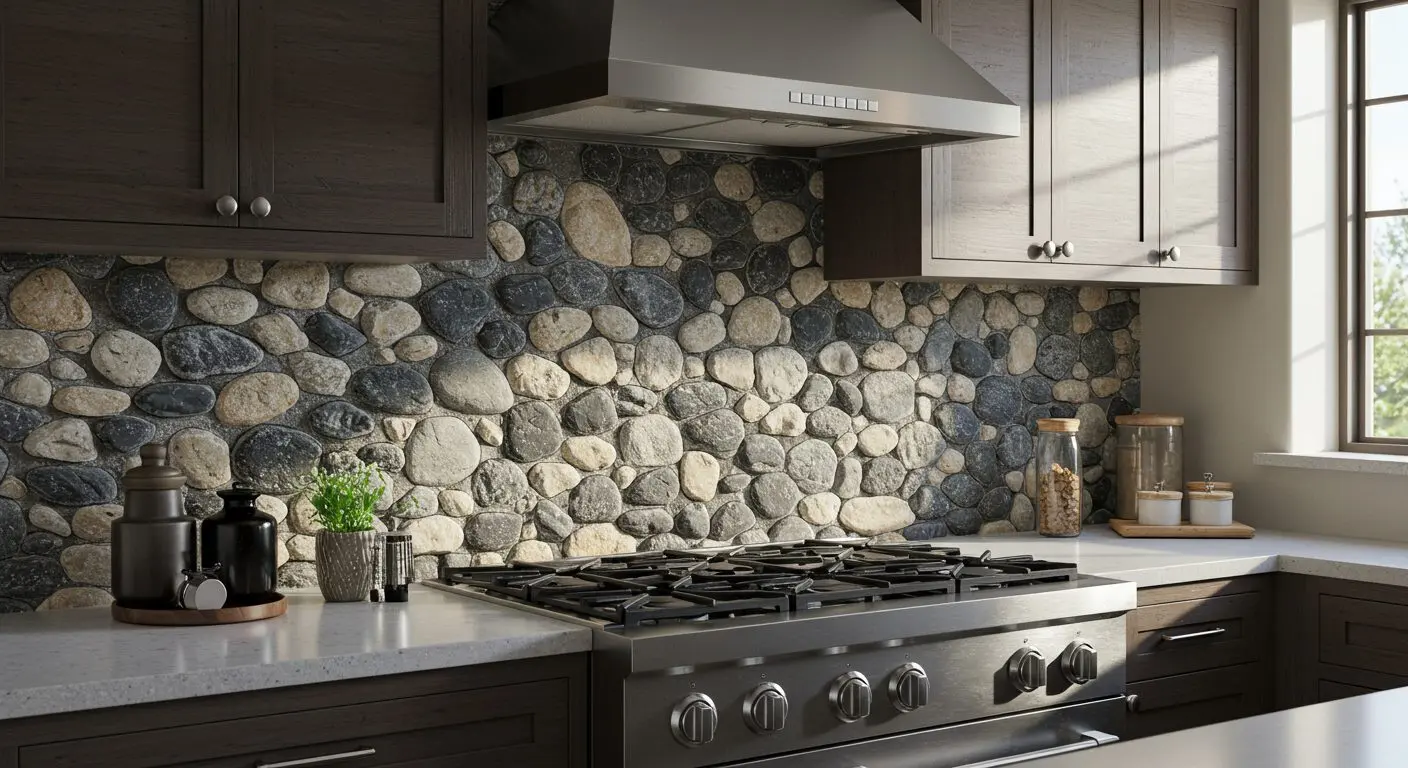
These pebble design ideas work particularly well in creating flow and gentle movement throughout a space. They’re especially effective in areas where hard edges dominate, as they provide a natural counterpoint to geometric shapes. The variety of colors available – from pale creams to deep charcoals – means they can be selected to complement any color palette.
Luxury Marble Backsplashes and Counters
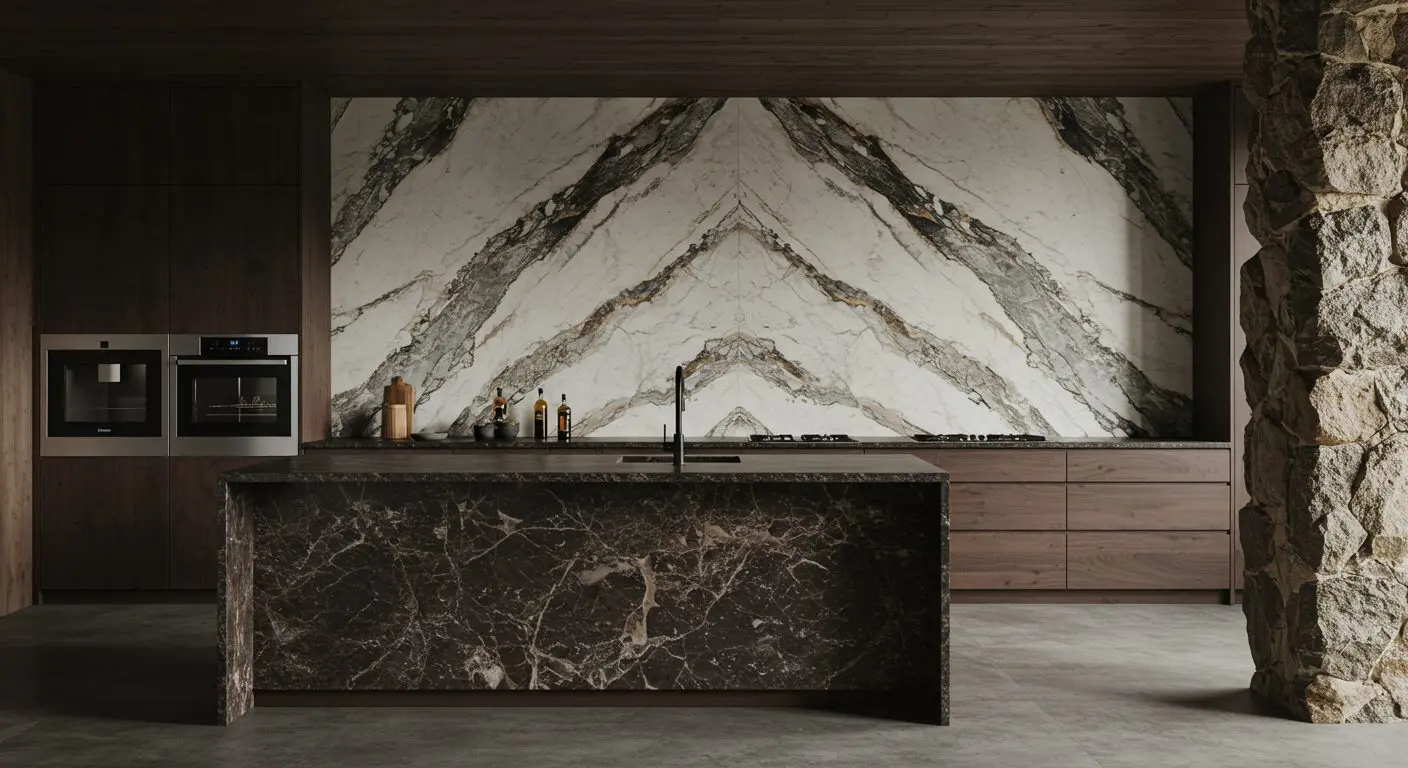
Marble remains the crown jewel of natural rock elements in interior design, particularly in kitchens and bathrooms. The distinctive veining patterns found in marble create a sense of movement and depth that synthetic materials simply can’t replicate. When I renovated my kitchen last year, the Carrara marble countertops immediately became the star of the show, their subtle gray veining complementing the soft blue cabinetry perfectly.
Popular marble applications include:
- Kitchen countertops and islands
- Bathroom vanities and shower walls
- Backsplashes and accent walls
- Floating shelves and decorative ledges
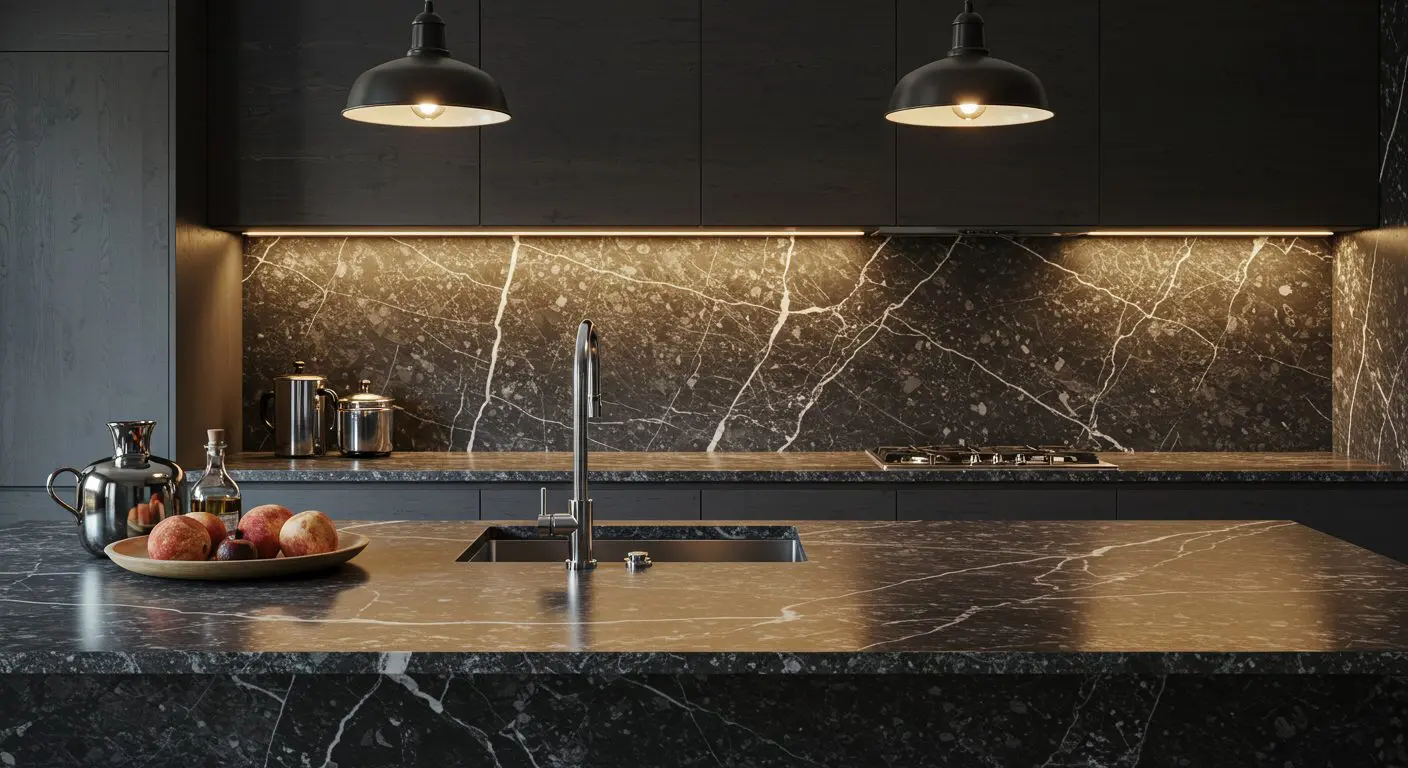
While traditional white marbles like Carrara and Calacatta remain popular, there’s growing interest in more dramatic options like dark Nero Marquina or the green-veined Verde Alpi. For interior spaces looking to make standard elements appear custom, marble is unmatched in its ability to elevate ordinary surfaces.
Contrary to common belief, marble can be practical with proper sealing and care. Honed finishes (matte rather than polished) show fewer water spots and fingerprints, making them ideal for busy kitchens. The natural variation in each slab means your space will have a truly one-of-a-kind character that manufactured materials simply can’t match.
Organic Continuity with Indoor-Outdoor Stone Transitions
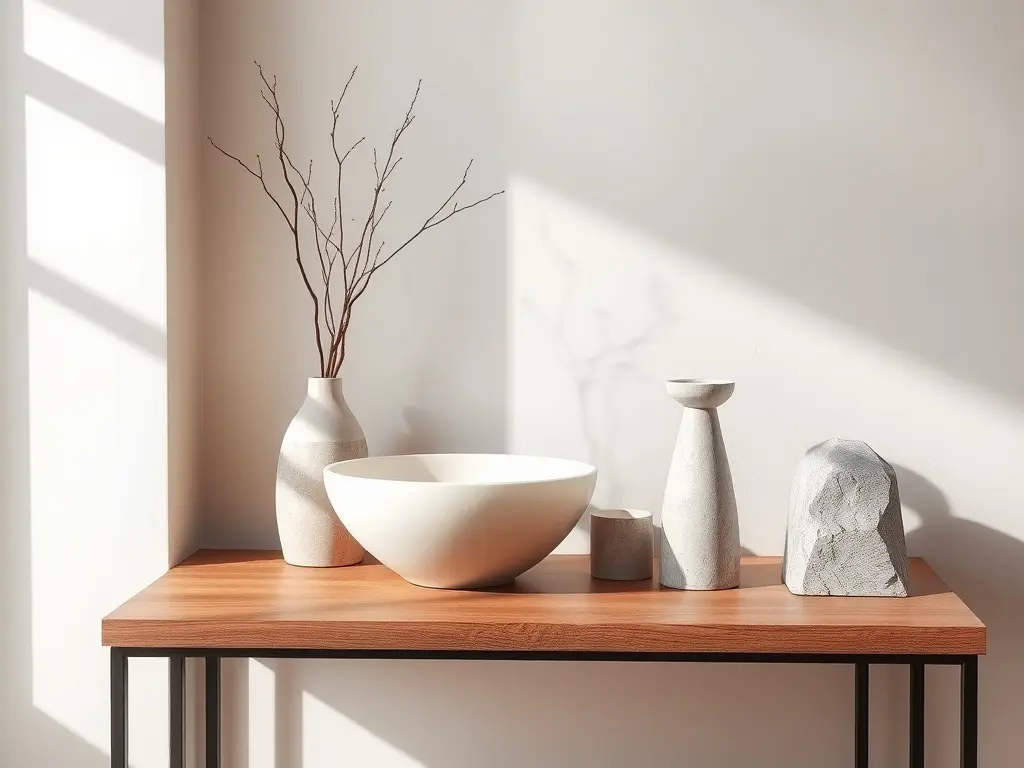
One of the most striking uses of natural rock elements in interior design is creating seamless transitions between indoor and outdoor spaces. Using the same stone material across these boundaries visually extends your living space and strengthens the connection to the natural world. A friend recently extended her limestone patio flooring right into her sunroom with stunning results – the space feels twice as large and incredibly harmonious.
Effective transition applications include:
- Flagstone floors that continue from patios to interior spaces
- Stone thresholds that bridge different flooring materials
- Stacked stone walls that appear on both sides of glass doors
- River rock borders that define transitional spaces
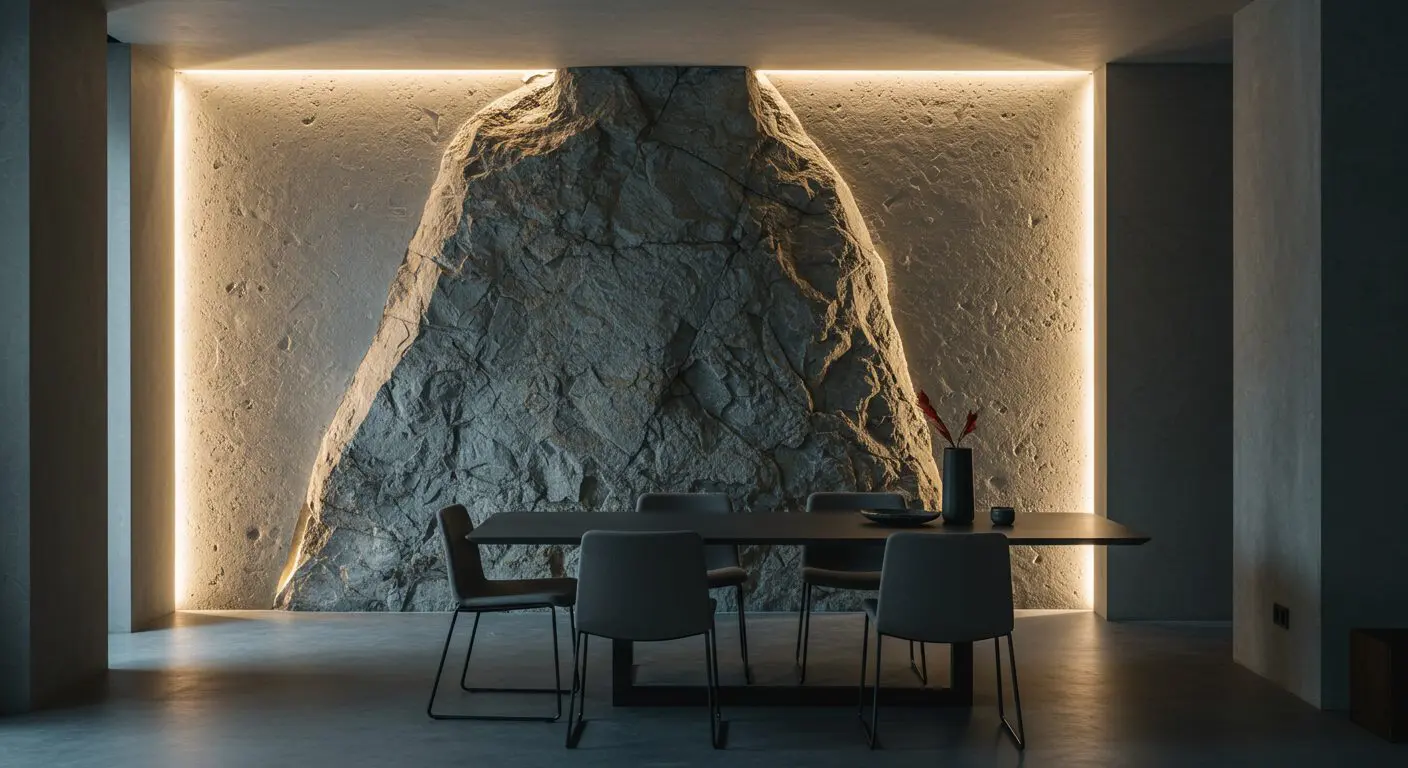
These stone transitions work particularly well with contemporary glass walls and sliding doors, where the visual flow is paramount. The durability of stone makes it ideal for these high-traffic areas, standing up to elements both inside and out. Natural materials like granite, slate, and limestone can be used to create these cohesive transitions.
What fascinates me about these transitions is how they blur the boundaries between architecture and landscape. When home styling and interior design embraces these connections, spaces feel more expansive and intentional. The continuity creates a subtle psychological effect that makes both indoor and outdoor areas feel more generous.
Simple Stone Decor Pieces That Speak Volumes

Not everyone has the budget or desire for major stone installations, but that doesn’t mean you can’t incorporate natural rock elements in interior design. Small stone decor pieces offer an accessible entry point that still captures the essence of this trend. My coffee table features a collection of polished agate slices that catch the light beautifully and always spark conversation when guests come over.
Affordable stone accent options include:
- Agate bookends and paperweights
- Onyx or marble serving boards
- Soapstone coasters and trivets
- Polished river rocks as decorative bowl fillers
- Crystal geodes as sculptural accent pieces

These smaller interior stone features allow you to play with color, texture, and form without committing to permanent installations. They’re perfect for renters or those who like to refresh their decor seasonally. The natural variation in these pieces means even inexpensive stone items feel special and unique.
I’ve found that grouping similar stone pieces together creates more visual impact than scattering them throughout a space. A collection of three marble objects of different heights on a shelf makes a stronger statement than those same pieces distributed across different rooms.
Rock Features in Minimalist Interiors

Contrary to what some might expect, natural rock elements in interior design pair beautifully with minimalist aesthetics. The organic irregularities and subtle color variations of stone provide visual interest without clutter, making them ideal companions to clean lines and monochromatic palettes. In my previous apartment, a single travertine side table against white walls created more character than an entire gallery of artwork would have.
- Stone grounds open concept spaces without visual heaviness
- Natural materials add warmth to austere interiors
- Textural contrast balances sleek modern surfaces
- Neutral stone tones complement minimalist color schemes
In minimalist settings, less truly becomes more. A single striking piece—like a marble coffee table or a sculptural stone lamp base—can define an entire room. These statement pieces work because they don’t compete with other elements for attention. Instead, they become focal points that anchor the space.
The key to successfully integrating stone into minimalist interiors is choosing pieces with clean, simple shapes that let the natural beauty of the material speak for itself. Avoid ornate carvings or excessive detailing in favor of honest expressions of the stone’s inherent character.
Lighting and Greenery: Perfect Partners for Natural Rock

The full beauty of natural rock elements in interior design only emerges with proper lighting and complementary natural companions. Strategic lighting placement can highlight the dimensional texture of stone surfaces, creating dramatic shadows and bringing out subtle color variations. I installed adjustable recessed lighting above my stone accent wall, and the difference between daytime and evening appearances is remarkable.
- Soft, warm light accentuates the texture and depth of stone
- Plants soften hard rock surfaces and create visual dialogue
- Natural light reveals the true colors and patterns in stone
- Uplighting creates dramatic effects on textured stone walls
The pairing of plants with stone creates a particularly harmonious effect. The contrast between soft, yielding foliage and solid stone mirrors relationships found in nature. Trailing plants cascading over stone ledges or succulents nestled among decorative rocks create miniature landscapes that bring life to interior spaces.

When designing with natural rock elements in interior design, it’s worth considering how the light in your space changes throughout the day. Materials like marble and onyx can actually appear translucent when backlit, while textured stones like slate or quartzite reveal different characters as the angle of light changes from morning to evening.
| Feature | Benefits |
|---|---|
| Durability | Withstands wear in high-traffic and wet areas |
| Texture | Adds sensory interest and visual balance |
| Versatility | Works in rustic, modern, luxe, or coastal styles |
| Sustainability | Often locally sourced, minimal processing required |
| Timelessness | Never goes out of style |
Natural rock elements in interior design tap into something timeless within us – a connection to the earth that transcends fleeting trends. From substantial stone walls to delicate agate slices, these materials carry the imprint of geological processes spanning millions of years. This sense of permanence grounds our spaces in a way that manufactured materials simply cannot match.

Whether you incorporate a dramatic marble kitchen island or simply collect beautiful river rocks from meaningful trips, these elements bring authentic character to your home. They remind us of our connection to the natural world even as our lives become increasingly digital. For inspiration and examples of how to incorporate these elements in various settings, explore applications at MSI Surfaces – their galleries showcase everything from subtle to dramatic stone installations.
The beauty of natural rock elements in interior design lies in their versatility and staying power. Unlike trendy colors or patterns that may feel dated in a few years, stone remains relevant and beautiful across decades. Its subtle complexity continues to reveal new details over time, making it an investment that grows more valuable with familiarity. By thoughtfully incorporating these elements into your home, you create spaces that feel both grounded and alive – a perfect sanctuary for contemporary living.




